As a music director for tours, I spend countless hours scouring YouTube to see what other touring artists are doing. This leads to helpful lessons in the craft of live performance and transforming recorded music into energetic live shows. Sometimes, I can’t help it that the bassist in me naturally takes over and I only zoom in on the bass parts. One of these moments happened just a few weeks ago, when I was watching clips from the Backstreet Boys and New Kids on the Block arena tour they did together in 2013.
A fair amount of pre-recorded tracks were used due to the pop nature of the music, but the four players in the backup band generated a surprisingly large sonic footprint. I was actually blown away by the arrangements that borrowed heavily from classic R&B and featured chord progressions and rhythms that completely revamped the feel and structure of the album versions. What really knocked me over was bassist Ethan Farmer’s playing and the way his parts filled up much more space than a more traditional approach.
YouTube It
Yes, this is New Kids on the Block performing their 1988 top tenner, “The Right Stuff,” but if NKOTB’s not your bag, cover your eyes and listen to the transporting performance of Ethan Farmer, who displays the technique covered in this column to perfection on the choruses.
Farmer has also lent his skills to Lionel Richie, Janet Jackson, Christina Aguilera, Babyface, and Patti LaBelle—just to name a few. His signature approach has been apparent on every major tour I’ve heard him on, but in this specific case, it seemed like he wasn’t holding back whatsoever! The notes sounded warm and fat on the bottom, but there were plenty of upper-register, rhythmical pops peppered in with high intensity. At first listen, however, I couldn’t totally decipher what technique he was using.
Upon closer inspection (and after watching some of Farmer’s other videos), I discovered he was using a hybrid technique that can be tremendously useful for a number of applications. The technique is actually very similar to one I was first turned on to while attending music school in Minnesota back in the mid ’90s. Loosely referred to as the “Minneapolis Rumble” by local players—including some in Prince’s camp—there is plenty of low end to go around as the word “rumble” would indicate. But, in the middle of this rumble, there is also a percussive funkiness that somehow comes through the slightly looser, muddy, general approach.
Farmer’s technique can be broken down more easily if you are familiar with a few different skills beforehand, so let’s take a look at the building blocks for his half-slap/half-plucking style.
Photo 1
Soften it up. The warmer low-end of Farmer’s sound is achieved by not slapping the bass in a traditional matter, but, rather, by using your thumb as a kind of soft pick instead. If you are familiar and practiced with using a palm-muting technique (Photo 1)—where your palm is muting the strings by the bridge and the thumb is plucking the strings to get a vintage-electric, or even an upright-like, sound—that’s a good starting point.
While playing a bass line with your thumb, you can then use your index finger to pop the strings or add ghost notes. Since this is done in a softer manner and closer to the bridge, the popping of the 1st or 2nd strings won’t result in the strings hitting the fretboard like a traditional slap-bass-style pop would.
Double thumbin’. The brighter, more-percussive top end is achieved by employing a more traditional slap-bass technique, where the low strings are played with a heavier attack. The up-and-down thumbing technique that was pioneered by Victor Wooten actually comes in handy here, and the internet is filled with videos of players copping the style for you to check out. Tip: Being able to get a similarly strong volume out of the thumb’s upstroke as you are on the downstroke, or slap, is crucial.
Photo 2
Most rules regarding slap bass have us playing with the thumb positioned right at the neck/body joint, and then doing the popping directly in front of the neck pickup, where your index finger is naturally positioned when slapping by the neck. In order for double-thumbing to work most effectively, I prefer to move my thumb back just a little bit (Photo 2), so I can properly get underneath the string without the fretboard getting in my way.
Photo 3
Hybrid time. After achieving a basic grasp of the aforementioned techniques, a hybrid of the two is what gets us very close to the approach Farmer uses. It borrows the palm muting from the first example, but we shift the entire right-hand position forward from the bridge to where your hand is positioned over the bridge pickup and your thumb is plucking the strings over the neck pickup in the middle of the instrument’s body (Photo 3). When your thumb is moving in an up-and-down motion, you’ll get a slap-like sound without actuallyslapping the string into the fretboard. This approach blends the feel of a slap player with the feel of a funky pick player. (We getthat touch of pick flavor thanks to the sound the nail makes while playing the upstrokes.)
Larry Graham—the originator of slap bass as we know it—also slaps a little farther back from the neck. Graham’s influence is certainly obvious in the way Farmer plays, but Farmer has modernized the technique and made it a little looser. After studying more clips of his playing, I’ve also noticed that he occasionally surrenders his thumbing-toward-the-back-of-the-body position in order to squeeze in a quick pop of the 1st string closer to the neck (where other players are normally positioned). To pull this off, lightning fast movement is a requirement.
Watch the lesson:


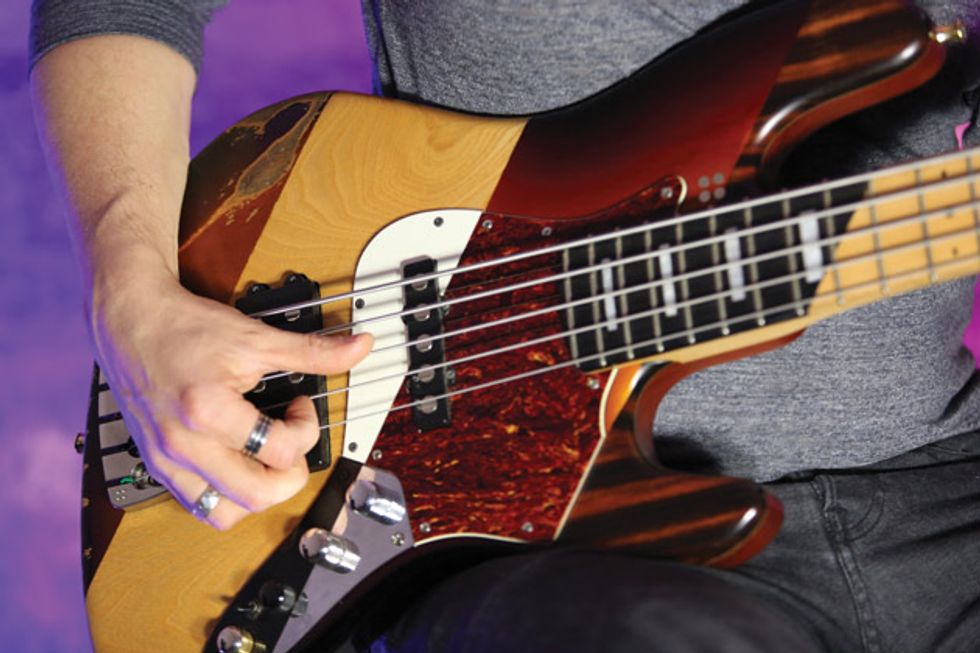
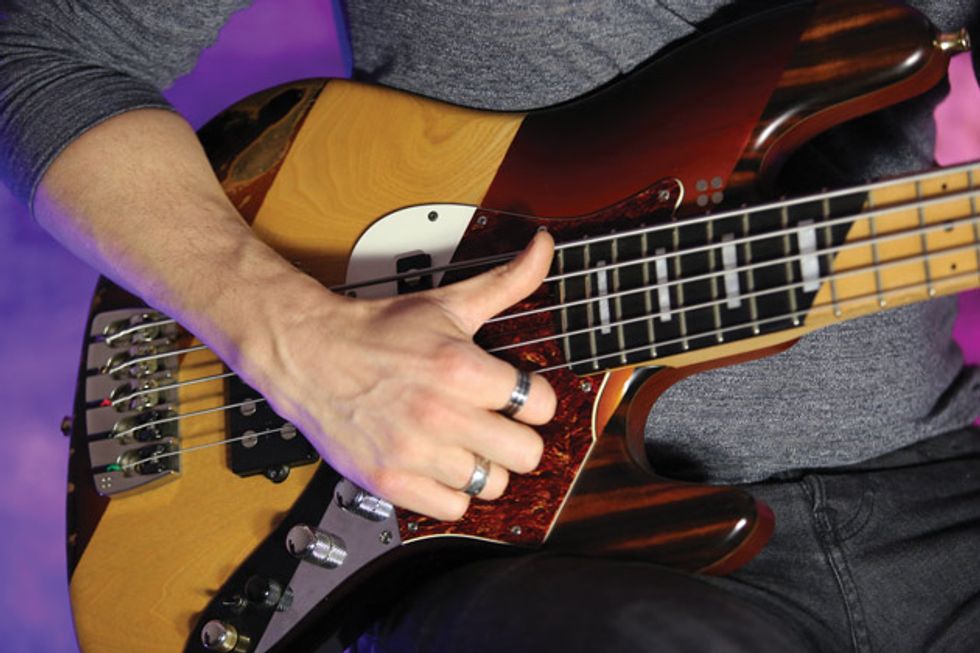
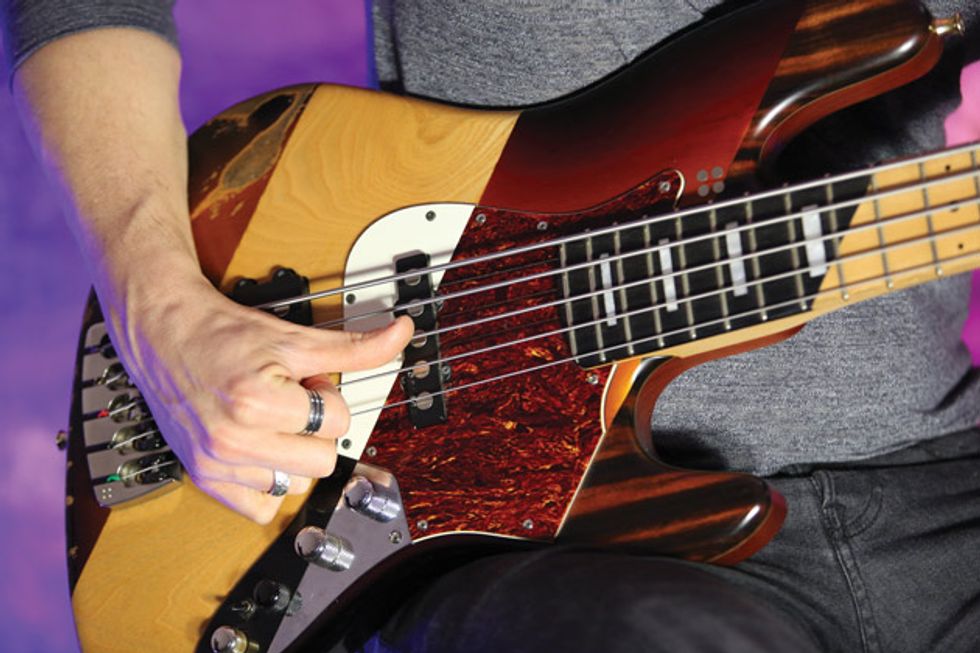
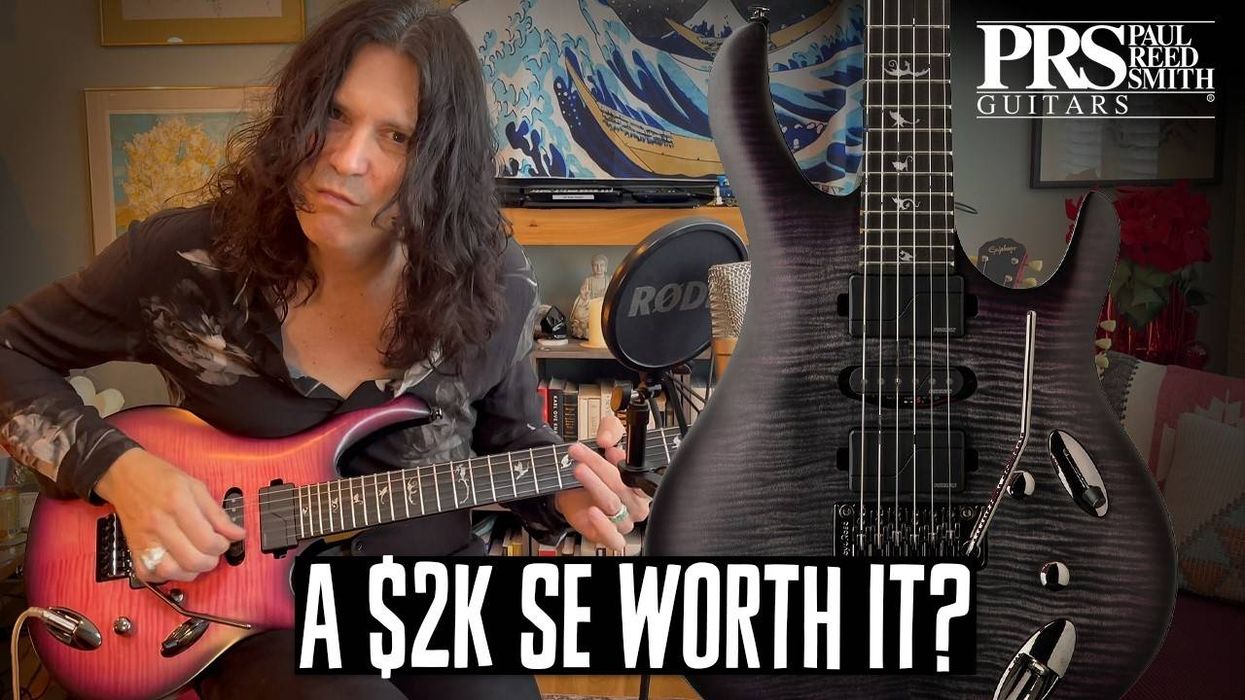


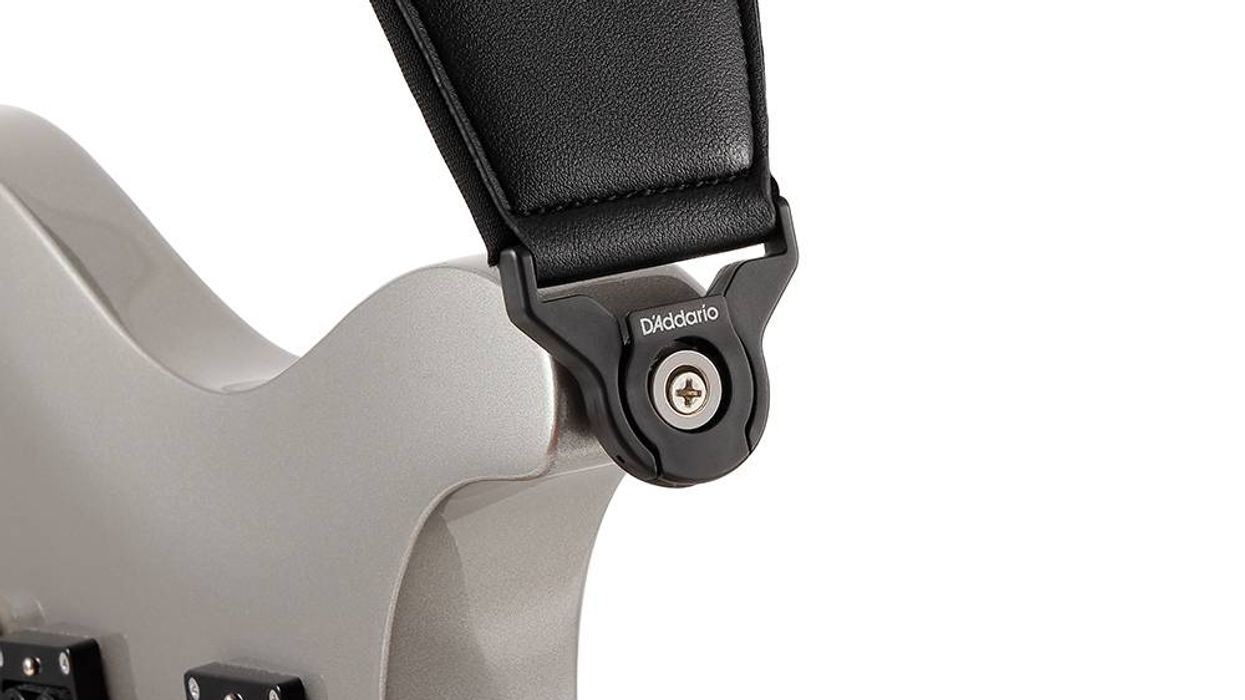
![Rig Rundown: AFI [2025]](https://www.premierguitar.com/media-library/youtube.jpg?id=62064741&width=1245&height=700&quality=70&coordinates=0%2C0%2C0%2C0)












 Shop Scott's Rig
Shop Scott's Rig















































